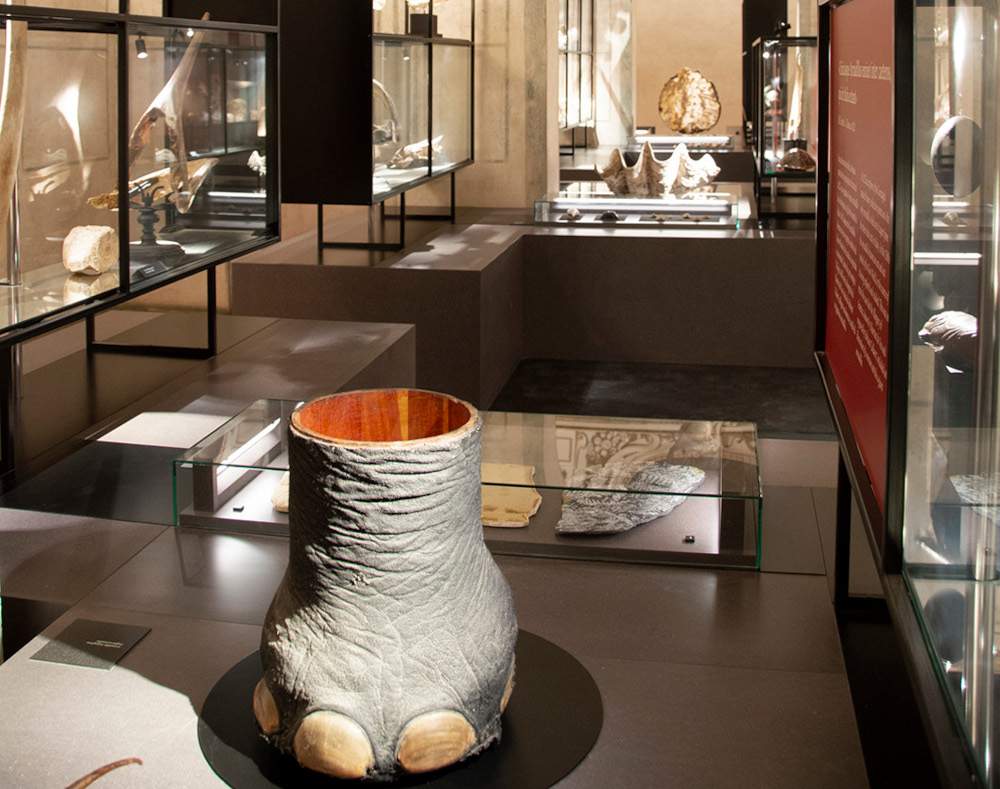The Wunderkammer section of the Ducal Palace in Mantua will reopen to visitors on Tuesday, March 14.
About a year ago the Ducal Palace, at the Galleria delle Metamorfosi, inaugurated an exhibition entitled Naturalia e Mirabilia. Science at the Court of the Gonzaga, an exhibition itinerary consisting of a permanent and a temporary part. The object of the operation was precisely the well-known Wunderkammer of the Gonzagas, an unusual collection that arose from the years of Isabella d’Este and grew until the late 1720s, consisting of exhibits from the animal, vegetable and mineral worlds. A kind of three-dimensional encyclopedia of the visible world of the time, at a time when science, folklore and myth were merging. A crocodile, a narwhal tooth (the unicorn’s horn), an armadillo, a rare bezoar, a shark’s jaw, fossils, stones, lapis lazuli and other artifacts displayed to evoke the awe of a once-in-a-lifetime collection that fascinated travelers and scientists from all over Europe during centuries past.
After the hippopotamus taxidermy was returned to the Kosmos Museum in Pavia last October, the section had been closed for an update and arrangement of the materials, which have been increasing, thanks to acquisitions and donations (by Marina Baguzzi, Elisa Calamari, Giano Del Bufalo, Giovanni Mori, Pierina Tondelli and Sara Scatragli, among others).
The layout has now been perfected and enriched with a number of exhibits that will complement the already rich and curious display and once again evoke the splendor of the Gonzaga age. The section devoted to shells is expanded and richly integrated, recalling the wealth of “Conchyliorum, Concharum, et Turbinatorum, quae a longinquis maribus allata, colorum varietate contendere inter se videntur” (shells from the remotest seas that compete with each other in shape and color) described in 1622. Still present are the “Pessi marini et altri animali monstruosi” that already “adorned” Frederick II’s studiolo in the early 16th century; there is an elephant’s foot, similar to one already recorded in the Ducal Palace in 1601 by a Frenchman, Pierre Bergeron (“un pied tout entier de la grand beste”); flint arrowheads, known then as ceraunia, which were believed to be the “petrified lightning bolts.” To the world of symbols refers the chameleon, already remembered in medieval and Renaissance treatises as a symbol of versatility (in positive terms), and the gallery now also houses a white peacock. In 1593 a pair was expected as a gift from Florence, from the Medici court, to whom the Gonzaga family was related. At that time these birds roamed freely through the gardens, just as birds of paradise and tropical parrots could be seen flying in the halls of the palace.
The Wunderkammer itinerary is going to establish itself as a permanent element of the museum offerings of Mantua’s Ducal Palace. It can be visited with a 9-euro museum ticket (even without the Bridal Chamber), every morning Tuesday through Saturday from 8:20 a.m. until 1 p.m.
“The itinerary remains in potential growth,” says Ducal Palace director Stefano L’Occaso, “also thanks to the ductility of the exhibition systems, given to the layout by the project of Massimo Ferrari and his collaborators. This section of the museum is designed to arouse curiosity and trigger a reflection on the culture of the Renaissance and the tastes of the time, when a bezoar was of equal or greater value than an important painting by Titian or Caravaggio: a hierarchical relationship that may be surprising today, but which was justified by the extreme rarity of the artifacts that, collected from the most diverse parts of the world, came to Mantua to bring prestige to the Gonzaga family.”
 |
| The Wunderkammer of the Ducal Palace in Mantua reopens to the public |
Warning: the translation into English of the original Italian article was created using automatic tools. We undertake to review all articles, but we do not guarantee the total absence of inaccuracies in the translation due to the program. You can find the original by clicking on the ITA button. If you find any mistake,please contact us.